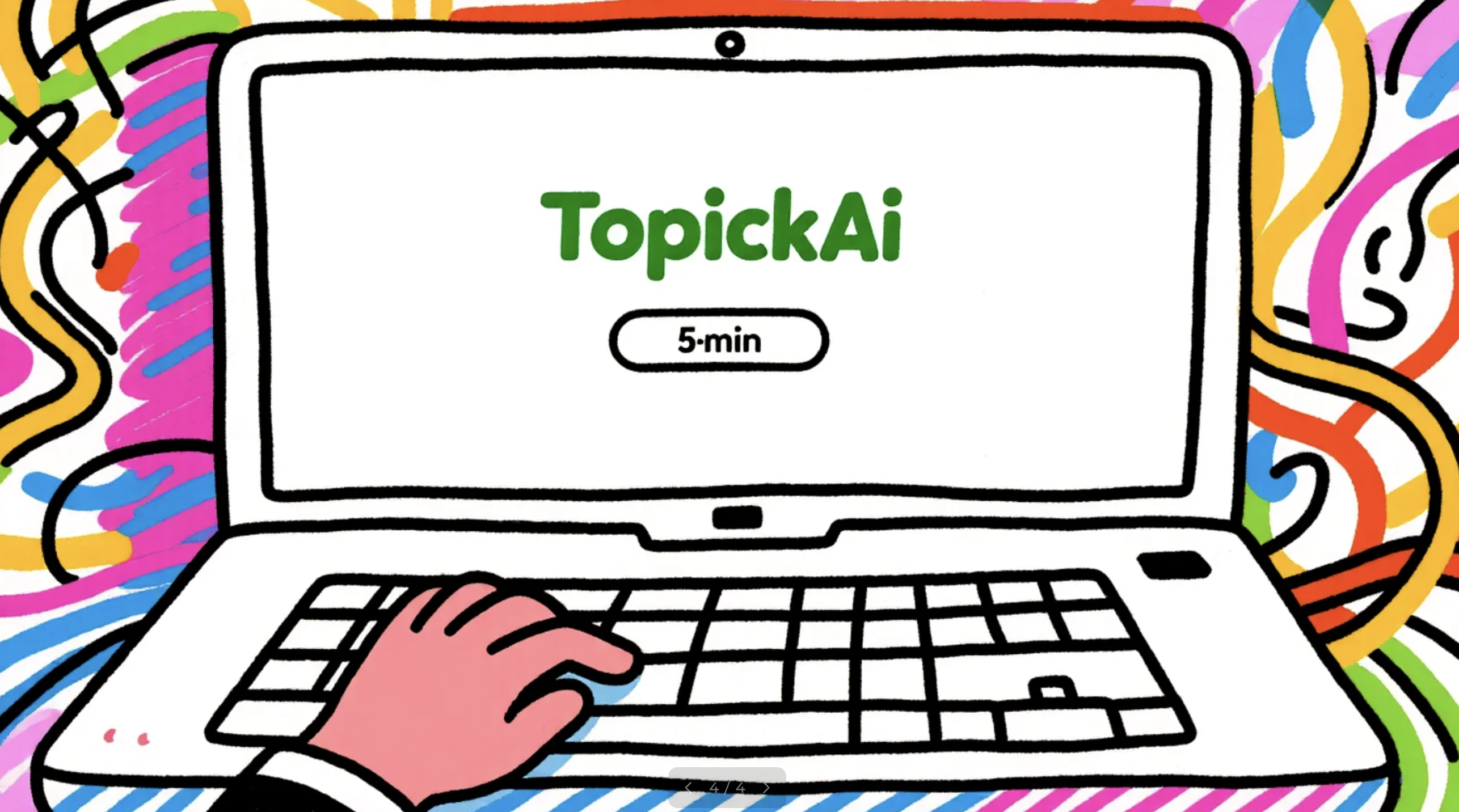A friend who's been struggling with AI writing tools recently asked me: "Everyone says AI can mimic writing styles now, but everything I get sounds like it was written by the same boring robot. What am I doing wrong?"
This question hits at something most people miss when they dive into AI writing tools. They think style cloning is about making AI write "like them," but that's exactly backwards. The real question isn't whether AI can copy your words—it's whether it can understand why you choose those words.
Why Writing Style Matters More Than Ever in the AI Era
Here's what's happening: as AI writing becomes ubiquitous, authentic personal voice becomes scarce. And scarcity creates value.
Think about it—when everyone has access to the same ChatGPT or Claude, what differentiates your content? It's not the grammar or even the ideas anymore. It's how you express those ideas. Your style becomes your competitive moat.
But here's the catch: most AI tools treat style like a surface-level coating you can spray onto any content. They'll analyze your sentence length, count your semicolons, maybe note that you use "however" more than "but." Then they'll spit out text that technically matches these patterns while completely missing your actual voice.
It's like asking someone to imitate your handwriting by only looking at the pen you use. Sure, they might get the tool right, but they'll miss everything that actually makes your writing yours.
The Real Science Behind Style Cloning
What Topick.AI figured out—and what makes it different from the "universal" tools flooding the market—is that writing style isn't just about linguistic patterns. It's about decision-making patterns.
When you write, you're constantly making micro-decisions: Do I address this counterargument directly or let it hang? Do I use data to support this point or go with an anecdote? Do I position myself as an expert or a fellow learner? These decisions reveal far more about your voice than whether you prefer short or long sentences.
This is why simply feeding ChatGPT a few of your articles and asking it to "write like me" usually fails. The AI can mimic your surface habits—your vocabulary choices, your paragraph structure—but it can't replicate your thinking process because it doesn't understand the context behind your decisions.
Topick.AI's approach is fundamentally different. Instead of just analyzing what you've written, it learns how you write. It picks up on patterns like: When do you choose personal anecdotes over data? How do you handle controversial topics? What's your default relationship with your audience—teacher, peer, or challenger?
These deeper patterns are what create authentic voice. And unlike surface-level features, they can't be easily copied by competitors or diluted through overuse.
The 5-Minute Style Cloning Process: What Actually Works
Most people think more data equals better results. That's big tech thinking, and it's wrong here. When it comes to style cloning, quality and consistency matter far more than quantity.
Here's what actually works in Topick.AI's Style Hub:
The Sweet Spot: 5-20 Pieces of Content
Too few samples (under 5) and the system can't identify reliable patterns—you'll get generic output that occasionally sounds like you. Too many samples (over 20) and you create the opposite problem: the system tries to average across too many variables and produces muddled results that don't sound like anyone.
Five to twenty pieces hits the sweet spot where patterns are clear but not overly complex. Think of it like learning someone's personality—you need enough interactions to understand their consistent traits, but not so many that you get confused by their different moods.
Platform Consistency: Your Secret Weapon
Here's something most people miss: your writing style isn't just "you"—it's "you on a specific platform for a specific audience." The way you write LinkedIn posts isn't the same as how you write newsletter articles, even though it's still recognizably your voice.
This is why Topick.AI recommends uploading content from the same platform. If you're planning to write YouTube scripts, upload YouTube scripts. If you're working on blog posts, stick to blog posts. The platform shapes your voice in subtle but important ways—sentence length, formality level, how you handle calls-to-action.
You can actually create multiple styles within Topick.AI for different platforms. I know one creator who has three distinct styles: "LinkedIn Professional," "Newsletter Personal," and "Twitter Sharp." Same person, same core values, but optimized for different contexts and audiences.
Naming That Actually Helps
Most people name their styles something generic like "My Style" or "John's Writing." That's useless six months later when you're trying to remember which style to use for which project.
Better approach: name your styles based on context and purpose. "Newsletter - Analytical" tells you more than "Writing Style 1." "Blog - Conversational Expert" is clearer than "Personal Voice." The name should remind you when and why you'd use this particular version of your voice.
What Makes This Different From Everything Else
The AI writing tool market is flooded with products that promise to capture your style. Most deliver the same result: generic content with a few of your verbal tics sprinkled on top.
Topick.AI's insight is that style isn't just about language—it's about decision-making patterns that reveal themselves over time through interaction. The system doesn't just analyze your past writing; it learns from how you respond to its suggestions, what edits you make, what you accept and what you reject.
This creates something closer to having a writing partner who gradually learns your preferences rather than a tool that applies a template. The more you use it, the better it gets at predicting not just how you would say something, but what you would choose to say in the first place.
That's the real value proposition here. In a world where everyone has access to powerful AI writing tools, the competitive advantage goes to whoever can maintain authentic voice at scale. Topick.AI makes that possible not by replacing your voice, but by amplifying it.
How This Compares to Other Tools You Might Have Tried
Let me be honest about the competition, because I've tested most of them.
ChatGPT and Claude are impressive for general writing tasks, but they're built to be helpful to everyone, which means they're optimized for no one in particular. When you ask them to write "in your style," they're essentially playing a guessing game based on limited context. The result feels like someone doing an impression of you after meeting you once at a party.
Jasper.AI takes a different approach—they focus on marketing copy and have templates for different industries. It's useful if you want to write like a "SaaS marketing manager" or "fitness coach," but these are generic personas, not your specific voice. You end up sounding professional but forgettable.
Copy.ai and similar tools excel at generating lots of content quickly, which is valuable if volume is your main concern. But volume and voice are often inversely related. The faster you need to produce content, the more generic it tends to become.
The fundamental difference is focus. These tools try to solve the general problem of "AI writing," while Topick.AI solves the specific problem of "writing that sounds like you." It's the difference between a Swiss Army knife and a specialized tool—both have their place, but when you need precision, specificity wins.
Most importantly, other tools treat style as a one-time setup problem. You tell them your preferences once, and they apply those preferences forever. Topick.AI treats style as an evolving relationship. Your voice changes based on what you're writing about, who you're writing for, and how your thinking develops over time. The system adapts accordingly.
The question isn't whether AI can write. The question is whether it can help you write like you, but better. For most people trying to build their personal brand or thought leadership, that's the difference between valuable content and forgettable noise.
And unlike the "universal" tools that try to be everything to everyone, Topick.AI focuses specifically on this one challenge. Sometimes the best solution isn't the most feature-rich product—it's the one that solves your actual problem without getting in the way.







